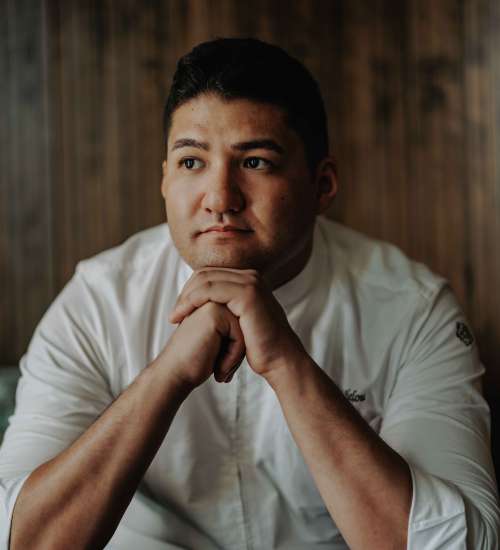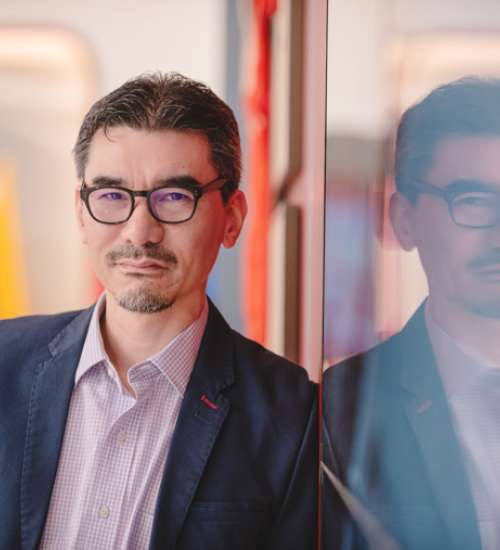Incorporated in 2019, Fefifo aims to provide digitalized, standardized ready-to-farm spaces where smallholders can start their own commercial farms with financial support and guaranteed buyers. “Our vision is to pioneer co-farming as a new world model for sustainable, profitable smallholder farming,” says Chris Fong, Chief Strategy and Innovation Officer. This means, he adds, elevating smallholder efficacy and profitability through modernization. Fong, who is responsible for strategy, technology, and raising funds, co-founded the venture with Kelveen Soh, the company’s CEO.
Bootstrapped in the beginning, Fefifo (www.fefifo.co) has subsequently obtained capital through equity crowdfunding, strategic angel investors, and venture capitalists, including RHL Ventures, Malaysia’s Penjana Kapital and Scaleup Malaysia, Korea’s KB Investment, and Singapore’s Quest Ventures. RHL Ventures, in particular, invested in Fefifo as part of its environmental, social, governance (ESG) initiatives to tackle long-term food supply chain sustainability issues, Fong says. “With the Fefifo’s co-farming validated business model, it empowers 80 per cent of Southeast Asia farmers to maximize their agricultural yield.”
The company currently runs a 10-acre pilot co-farm in Ipoh, Malaysia, half of which is allocated to co-farming reinforced with a digital seed-to-sale platform. Their first two ‘agropreneurs’ have commenced farming early this year — one growing musk melons and the other chilis — and delivered the first harvest last month. “The crop growth has been tracking well against our digital crop models,” Fong reports confidently, “validating our ability to standardize farm operations for our agropreneurs.” With their first five acres validated, Fefifo is gearing up “to lift and shift” the remaining five acres and build more co-farms across Malaysia and, eventually, Indonesia.
- THE RISE OF AGROPRENEURS
- RENT AND LICENSING REVENUES
- THE TWO AGRITECHS
- TREMENDOUS POTENTIAL
The Rise of Agropreneurs
Fefifo implements its system in co-farms. “Think ‘central kitchens’ for smallholder farmers, with support for first cycle working capital and guaranteed offtake,” Fong proposes. “Smallholder farmers can easily start modern farming businesses in our farm spaces, turning them into what we call ‘agropreneurs’.” (Fong reiterates that they neither work with community farms nor build community farms.)
For a monthly rent of RM2,600 to RM4,300 and profit-sharing after every harvest sale, agropreneurs receive financial support for their first cycle working capital, start growing pre-curated crops in ready spaces of 1 to 2 acres, get equipped with modern farming infrastructure and crop systems such as greenhouses and fertigation/hydroponic systems, and operate off standardized digital processes and growing protocols to ensure consistent harvests that already has a guaranteed buyer, Fong elaborates. “In short, we standardize their operations and go-to-market for strength in numbers.”
Agropreneurs are also able to pay themselves a minimum monthly salary on top of their harvest profit share and can expect to take away RM50,000 to RM70,0000 per farmspace in annual income. “That’s up to twice a fresh graduate’s pay, or more than 10 times that of a traditional farmer,” Fong says.
- THE RISE OF AGROPRENEURS
- RENT AND LICENSING REVENUES
- THE TWO AGRITECHS
- TREMENDOUS POTENTIAL
Rent and Licensing Revenues
Meanwhile, Fefifo derives revenue from two streams: The first is a monthly rental, what they call Farmspace-as-a-Service (FsaaS) fee, for the co-farms that they build and operate, based on the type of lease and profit-sharing arrangement with the agropreneurs. This is realized twice to five times per year depending on the crop.
The second is a licensing revenue stream, currently under development, from the co-farming model and proprietary technology for white-labeled co-farms; this will potentially bring in an annual income from licensing and royalties.
“Our vision is to scale up self-operated co-farms, each around 25 to 50 acres, across Southeast Asia within five years,” Fong reiterates, “and to licence further the co-farming model globally.” Fong projects a span of over 200,000 acres of agricultural production in Southeast Asia, with US$730 million in annual recurring revenue within the decade.
- THE RISE OF AGROPRENEURS
- RENT AND LICENSING REVENUES
- THE TWO AGRITECHS
- TREMENDOUS POTENTIAL
The Two Agritechs
Fefifo views agritech as being under two categories. “One, what we call baseline agritech, such as fit-for-climate greenhouses, fertigation or hydroponic systems, nurseries, ground-water wells, filtration system, etc.” These, he points out, are things with which typical commercial farms are equipped but are out of reach of traditional smallholder farmers. “It is this baseline agritech that brings a tenfold increase in consistency of harvest volume and yield quality, which modernizes traditional smallholders to commercial smallholders.
“The other is what we call high-tech agritech, where robotics, IoT, AI, and so on are applied into agricultural practices. Many of these innovations have the potential to help farmers do things better; however, the premise for high-tech solution adoption is for farmers to already have access to baseline agritech.”
As a technology-first co-farm operator, Fefifo is committed to building co-farm spaces that democratizes costly baseline agritech for smallholder farmers, Fong emphasizes. “We employ our proprietary seed-to-sale digital platform to standardize their operations and manage the decentralized network of farms and farmers, and then curate other fit-for-purpose high-tech agritech solutions that we build or partner to seamlessly incorporate into their operations, pushing the envelope on efficacy and profitability.”
- THE RISE OF AGROPRENEURS
- RENT AND LICENSING REVENUES
- THE TWO AGRITECHS
- TREMENDOUS POTENTIAL
Tremendous Potential
“Eighty per cent of food that Asia consumes is produced by smallholder farmers, and 65 per cent of them will retire within the next 15 years,” Fong surmises. “Traditional farming is not profitable enough to attract (a new) generation; graduates of agriculture and related courses have some of the lowest employability. Topping it off, there are no breakthroughs in agritech that can replace smallholder farming entirely. So bringing up smallholder efficacy and profitability through modernization is key to feeding 8.5 billion people by 2030,” he concludes.
However, smallholders face a common set of problems, ranging from high capex and limited knowledge of modern farming, lack of scale, and pressure from middlemen, Fong cites. “For them, multiple solutions solving parts of their problem are not good enough; they need a true value chain solution. We see Fefifo’s co-farming model as that seed-to-sale solution for them.”
Fong runs the figures in his head: “Southeast Asia has 330 million rural population, 304 million acres of agricultural land, and a US$159 billion contract-farming market opportunity for Fefifo to be the world's first decentralised, outsourced, contract farming network.
“We believe we can change the way we do agriculture. Each member of our founding team has spent over a decade in venture-building, technology process creation, and implementation, farming and real estate, making us the perfect team to reimagine smallholder commercial farming.”











 Back
Back
